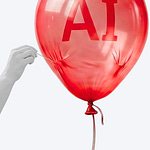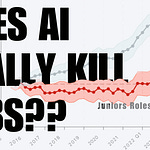Have you ever wondered how things like electricity are so integral to our lives that we barely notice it anymore? Flip a switch, and it’s there—a universal, standardized service that powers our routines without question.
Why AI as a Commodity Matters to You
Now, imagine a world where AI is just as ubiquitous as electricity. Every tool, service, and decision in your life is powered seamlessly by AI—no setup, no learning curve.
This future is closer than you think. AI is on the path to becoming the next essential commodity.
Yet, most of us still see AI as specialized technology, like smartphones or a software—not a standardized resource. But what happens when AI becomes as essential, interchangeable, and accessible as electricity?
Why should you care?
Seeing AI in this light changes everything. I found AI follows the trajectory of commodities like oil and electricity. If it continues on this path, you'll notice significant shifts in how it's priced, standardized, and potentially traded.
But AI is still different—it can think, learn, and could make decisions. Imagine your home adjusting the lights and playing your favorite music, not because you’ve programmed it, but because it’s learned your preferences and anticipates your needs.
So, understanding this potential shift is critical for you to leverage its potential and stay ahead of the curve.
What Exactly Is a Commodity?
What makes something a commodity?
I am referring to basic goods or resources that are interchangeable with others of the same type. This includes various items, from agricultural products like sugar, coffee, and wood to energy resources like oil and even services like electricity.

To understand whether AI would join and become a commodity, you need to understand the common traits among the existing ones.
For starters, commodities rely on standardization. Whether it’s a pound of coffee beans or a barrel of crude oil, certain quality benchmarks must be met to ensure these goods can be traded globally without confusion. This universal consistency makes them reliable and widely accepted.
Another hallmark is their widespread availability, transforming them into a shared global currency. Whether sipping your morning coffee in New York or Taipei, the vast networks of buyers and sellers ensure these commodities remain accessible worldwide.
Commodities also have fundamental usefulness—they meet everyday needs in ways we often take for granted. Sugar sweetens desserts, oil powers cars and factories, and electricity keeps our homes running. These aren’t luxuries anymore; they’re the backbone of modern life.
Their pricing is market-driven, shaped by global supply and demand rather than the whims of any single company or country. A poor cocoa harvest in West Africa, for instance, can send chocolate prices soaring. This transparency allows commodities to be traded on exchanges where their value reflects real-world conditions.
Finally, what makes these goods so dependable is their maturity and reliability. Decades—sometimes centuries—of refining processes and systems have made producing and distributing them predictable and stable. When you flip a light switch, you don’t question whether electricity will work because robust systems ensure it does.
These key turning points often overlap and are not always in a strict sequence, but every step is essential for something to be qualified as a commodity. I see AI today is following a similar path.
Now, let me walk you through the oil and electricity commoditization journey, and you’ll see my argument that AI will likely become the next commodity.













